calsfoundation@cals.org
Amity (Clark County)
| Latitude and Longitude: | 34°15’53″N 093°27’46″W |
| Elevation: | 703 feet |
| Area: | 3.21 square miles (2020 Census) |
| Population: | 681 (2020 Census) |
| Incorporation Date: | August 28, 1907 |
Historical Population as per the U.S. Census:
|
1810 |
1820 |
1830 |
1840 |
1850 |
1860 |
1870 |
1880 |
1890 |
1900 |
|
– |
– |
– |
– |
– |
– |
– |
140 |
211 |
– |
|
1910 |
1920 |
1930 |
1940 |
1950 |
1960 |
1970 |
1980 |
1990 |
2000 |
|
813 |
680 |
608 |
608 |
591 |
543 |
614 |
859 |
526 |
762 |
|
2010 |
2020 |
|
|
|
|
|
|
|
|
|
723 |
681 |
|
Amity traces its beginnings to the arrival of a group of pioneer families, under the leadership of Deacon William F. Browning, Clark County surveyor (1846–1850, 1852–1854), who settled along the old Caddo Cove Road just north of the Caddo River late in 1847. An abundance of water and rich bottomland drew them to the area. Soon after his arrival, Browning built a large two-story log house just west of Caney Creek. It soon became the center of an expanding community. According to Laura Scott, an early Clark County historian, Browning named his settlement “Amity” because he hoped to find in it “peace and brotherhood.”
In August 1848, Browning and a group of local citizens formed what would become the Bethel Missionary Baptist Church, the first religious organization in the area. He built a large log church house, which also served as Amity’s school, taught by Captain Robert S. Burke, Browning’s brother-in-law. The Amity post office was established nearby a few months later.
Although Amity saw no actual fighting, the Civil War was a trying time for the community. Union soldiers burned the Burke schoolhouse and Browning cotton press. As the war progressed, the local population, at first supportive of the Confederate cause, became divided in its loyalty, with family members serving in both the Union and Confederate armies. After the war, the center of the community shifted to the south side of the Caddo River, to an area that was first settled by John K. Allen and Dr. Amariah Biggs, the latter a widely known local physician and Methodist minister, about 1850. Shortly afterward, the Amity post office was relocated to this new area.
By 1870, Colonel Philander Curtis, a Connecticut native who is remembered as an old bachelor who wore a wig and kept a pet bear, had moved to the area. He built one of the first business houses where Amity now stands and served several years as postmaster. In 1871, Curtis and two other local businessmen, Riley Thompson and Jacob H. Lightsey, purchased property from Allen and laid out a small town site, centering on a public square. By 1874, Amity was a thriving little village with new businesses and several churches. The adjacent area became Amity Township in 1877. In 1880, a move was made to incorporate the community, but nothing came of it.
Early in the 1870s, a new schoolhouse was built in Amity to replace the one operated before the war by Captain Burke. One of the first teachers was Richard Melancthon Burke, son of Captain Burke, who operated the Amity Male and Female Academy from 1877 until his death in 1883. His successor was Samuel M. Samson, who arrived in Amity in 1888 and spent the next twenty years as head of the Amity High School, a private boarding school. After his departure, the school was absorbed into Amity public schools. In 1995, Amity schools consolidated with those of nearby Glenwood (Pike County) to form the new Centerpoint School District.
In 1887, it was rumored that gold had been discovered in the nearby Trap Mountains, and there was a brief but intense gold rush. When the rumors proved false, the gold rush fever quickly subsided.
Amity’s fortunes took a turn for the better shortly after 1900, when the Gurdon and Fort Smith Railroad was built through the area. Within a short while, the little town became a major shipping and trade center. Large sawmills in nearby Rosboro (Pike County) and Glenwood provided employment for its labor force. The Bank of Amity was formed in 1905, and its old brick offices are now on the National Register of Historic Places. The Amity Enterprise newspaper began in 1899, the Four-County Courier in 1915, and the Amity Owl in 1922. The Standard was the only newspaper being published in Amity by 2006. In the years leading up to World War II, the worldwide shortage of cinnabar (mercury) created a mining industry in the nearby Ouachita Mountains. However, with the end of the war and an increase in the world supply, the mines were abandoned. In 1940, the forerunner of the Curt Bean Lumber Company, later one of Arkansas’s largest independent manufacturers of Southern pine and CCA-treated lumber, began in Amity. Although the cooperate office moved to nearby Glenwood in the early 1970s, the company maintained a mill in Amity for some years. (Curt Bean filed for bankruptcy in 2010.)
In 2003, the 230.5-acre campus of the Arkansas Sheriffs’ Youth Ranches opened on nearby DeGray Lake. In the twenty-first century, the town serves as a bedroom community for commuters working in nearby towns and cities. A microbrewery, Slate Rock Brewing, opened in Amity in 2018.
For additional information:
Hughes, Mary. “History of Amity, 1937.” Place File. Arkansas State Archives, Little Rock, Arkansas.
“Reflections of the Past, Amity Alumni Homecoming Celebration.” Glenwood Herald. June 14, 1997, section C.
Robles, Josh. “Amity’s Lost Black Community.” Clark County Historical Journal 33 (2006): 8–16.
Scott, Laura. History of Clark County. Publications of the Arkansas Historical Association, Vol. 1. Fayetteville: Arkansas Historical Association, 1906.
Russell P. Baker
Arkansas History Commission and State Archives



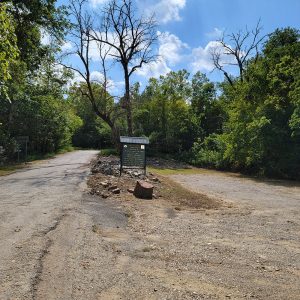


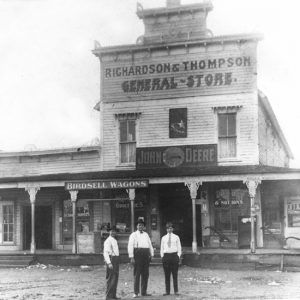
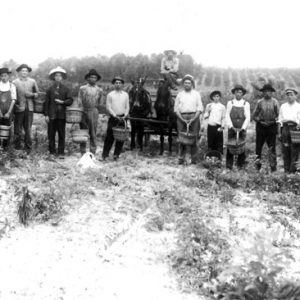
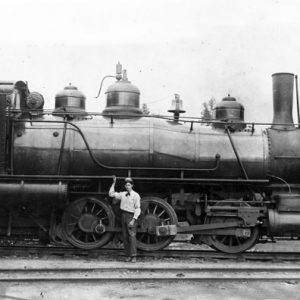
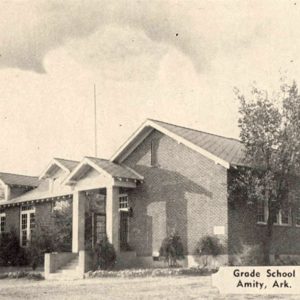


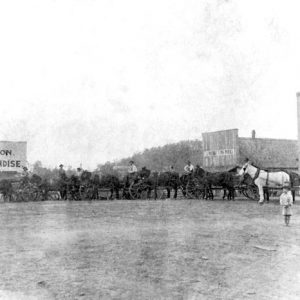

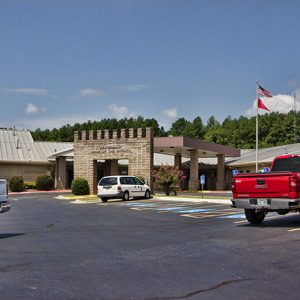
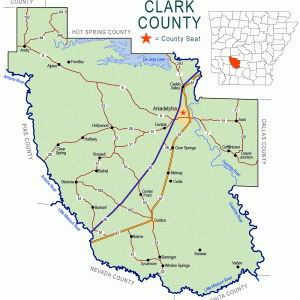







My father was John Hays Allen. He was born in 1912. My ancestors on my father’s side were early inhabitants of Amity. My father and his father (Jesse Allison Allen) owned the dry goods store in Amity during the 1930s and ’40s. William Curtis Hays was my maternal great-grandfather and my father John Hays Allen’s name was derived from his mother Jesse Florence Hays Allen’s maiden name of Hays. I have numerous old photos from the late 1800s and early 1900s. My grandmother’s sister was Willie Olds and her husband owned the old bank. Upon his death, his daughter Cleta became the CEO of the bank. One of my dad’s first cousins, William Hays, was the pharmacist who owned the drugstore.
I first noticed the error regarding using the name John Hays Allen instead of the correct John K. Allen as the town founder’s name on a sign post in the Amity square when I visited there a couple of years ago. I hadn’t been to Amity since the square was redone and was a bit shocked to see the mistake. I didn’t think to contact a historical society as I figured that the Olds Foundation must have made the error and, frankly, after seeing the physical condition of the bank (which I understand is on the Historical Register) in such a degenerative state I thought that would be a waste of time. I knew from past visits that the interior of the bank was left relatively untouched since Cleta moved to the “new” building. It seems such a shame that the foundation she set up did not do something to preserve the interior and its contents.